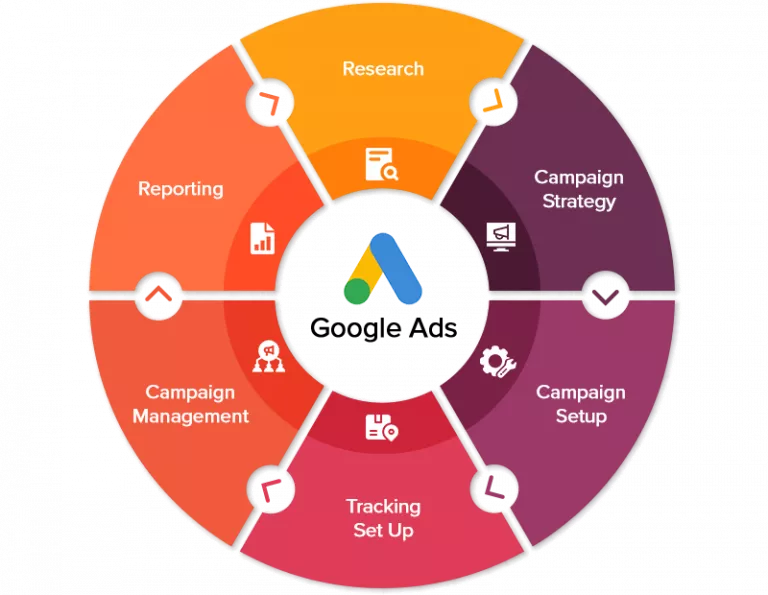Expanding your Google Ads reach to international markets can propel your business growth, bringing you closer to potential customers worldwide. However, managing global campaigns involves more than simply translating keywords. You need a robust strategy considering language nuances, cultural context, and local regulations. By leveraging powerful features such as Performance Max, Shopping Ads, and custom audiences, you can effectively tailor your ads to resonate with diverse audiences. Whether you’re an e-commerce business or a service provider, running successful international campaigns on Google requires careful planning, optimization, and continuous monitoring.

Understanding Google Ads and Its Importance in International Marketing
Google Ads is a digital advertising platform that helps businesses display their ads on Google Search, partner websites, YouTube, and the Display Network. For international campaigns, Google offers a wide range of features to refine targeting and reach broader audience segments in different countries. You increase your chances of securing conversions by choosing relevant keywords for each market, employing strong bid strategies, and aligning your ad strategy with local advertising goals. Google’s vast market share makes it particularly valuable for businesses seeking a competitive advantage worldwide.
Global advertising with Google helps you tap into billions of daily searches across devices. Many potential customers rely on mobile devices for product research, making mobile optimization and location-specific campaign settings crucial. With advanced tools like Google AI, Google Analytics, and conversion tracking, you can refine your approach to different audiences, improve your landing page experience, and ultimately drive cheaper conversions. Such essential customer insights enable you to adapt marketing strategies and secure the best return on investment in each target region.
Types of Google Ads for Global Campaigns
Search Ads
Search Ads appear on the Google SERP when users perform relevant searches, allowing you to showcase your products or services through text-based ads. They suit E-commerce businesses looking to drive conversions, provided you bid on effective keywords aligned with local search terms. ResponsiveResponsive search ads with your campaign objective can help you adapt messages for each audience.
Display Ads
Display Ads appear on the Display Network, including partner websites, apps, and Google Maps. This format uses images or banner ads to capture attention. Display Campaigns support brand awareness, contextual advertising, or retargeting. For instance, customers with display remarketing who visited your sites but didn’t convert might be enticed by specific deals or local offers.
Shopping Ads
Shopping Ads help businesses promote product listings at the top of Google’s results. You can display item images, prices, and store names by linking your Merchant Center data. Smart Shopping or Performance Max ads can handle campaign optimization automatically, while negative keywords help ensure relevant search matches. This campaign type is crucial for physical products aimed at an international audience.
Video Ads
Video Ads lets you reach users on YouTube, Google & YouTube partner sites, and the video partners network. Formats include bumper ads, non-skippable in-stream ads, or standard video advertising placements. They can introduce your brand or highlight app experience improvements. With compelling creativity, you can capture your audience’s attention and guide them toward your campaign goals.
Setting Up Your Google Ads Account for International Use
Before launching global campaigns, configure your Google Ads (formerly Google AdWords) account for multi-language and multi-currency support. In your campaign creation and settings, select target locations, languages, and daily budgets aligning with your marketing goals. Don’t forget to adjust bidding strategies based on average costs in different regions. A single campaign can serve multiple markets, but consider separate campaigns if your products or ads products differ widely among countries.
Leveraging robust reporting features like activity columns or Auction features helps you track campaign performance. Proper attribution models and tools let you see how audiences move through the conversion journey. Also, confirm you have an alternate email address as a backup for account access, especially if local offices or bilingual staff are involved in campaign management.
Researching Target Markets and Audience Segmentation
Effective international advertising requires a detailed grasp of local culture, customer behavior, and audience insights. Use Google Trends to check how potential audiences search for specific product offerings or services in each country. Also, explore Analytics 360 or Google Cloud-based solutions for deeper data on user experiences, prevalent devices (like Android devices vs. connected TV devices), and traffic from competitor regions.
Consider each market’s languages, business hours, and local consumer preferences. Some areas respond better to a single product focus, while others might prefer a broad range. Creating custom audiences can help you refine segments with audience signals based on demographics, app activity, or remarketing from search. Such audience segmentation ensures your marketing objectives align with local contexts.

Best Practices for Creating International Ads
Language Considerations
Translating ads is not enough. Localizing effectively means using language that matches user intent and relevant keywords, maintaining brand consistency while respecting cultural nuances. Aim for an amazing custom audience approach by adjusting ad copy, display URL, and calls to action to resonate with local readers. Tools like Coursera Project Network can guide translations or help find professional local linguists.
Cultural Sensitivity
Cross-cultural marketing demands caution. Ensure your creativity doesn’t misrepresent cultural elements or appear insensitive. For instance, images or references suitable for one country might alienate audiences in a more conservative market. Conduct thorough reviews or get local feedback, especially for video ads on Google & YouTube. Partnerships with local experts can help you catch cultural pitfalls early.
Budgeting for International Campaigns
One challenge with global advertising is managing daily and campaign budgets across multiple markets. Each region might have different average costs per action or recommended bidding strategies. Tools like Smart Campaigns or automated bidding in Performance Max can help allocate funds effectively. However, you must watch performance carefully to ensure you’re not overspending on underperforming markets.
Separate budget allocations for each region often work better than a single campaign budget. This approach allows you to optimize bids across channels. If your conversions are cheaper in one area, you can push more funds there for a higher return. By refining your budget plan, you’ll better align with the local cost structure and gain a more stable campaign for success.
Key Performance Indicators (KPIs) for Global Ads
KPIs depend on your advertising objectives, from e-commerce sales to brand awareness. Common metrics include:
- Conversions: The number of purchases, sign-ups, or lead form completions.
- Cost per Action: The average you pay for each desired activity, e.g., a form submission.
- Click-Through Rate (CTR): Helps assess the relevancy of your ads for a broader audience.
- Conversion Tracking: Evaluate how well your ads drive conversions across devices and channels.
- Attribution: Understanding the multi-touch conversion path using non-last click attribution models or Google Ads Auction data.
Use attribution tools like Google Analytics, Floodlight conversions, or Connect Analytics 360 for deeper analysis, gleaning essential customer insights into each market’s behavior.
Optimization Techniques for International Campaigns
A/B Testing Ads in Various Markets
Experimenting with multiple versions of your ads is crucial. For instance, different calls to action can be tested on the same audience segments to see which results in the best drive conversions. Also, small variations in language or tone might resonate better with local cultural contexts. A/B testing helps you make informed decisions about your marketing strategies.
Utilizing Local Keywords
Bidding on keywords unique to specific regions or languages can open your ads to a relevant search you’d otherwise miss. Tools like Google Keyword Planner or Google Ads Marketing can highlight search volumes, but local insights are key. You might discover more colloquial or regionally specific phrases, boosting the possibility of cheaper conversions.
Time Zone Adjustments
Optimizing for local time zones means scheduling ads when potential customers are most active. Some campaign subtypes or app ad campaigns allow you to set your daily budgets to align with prime hours in each region. This approach can align your ads with user activity, from morning commutes to evening research sessions.
Emerging Trends in Global Google Ads for 2023
Digital marketing strategy is shifting as Google invests in Google AI for better automation, connecting campaigns across search partner networks, video partner networks, or Discovery Ads. Smart Shopping is evolving to Performance Max, combining multiple advertising channels for synergy. Non-skippable in-stream ads and advanced remarketing from search also let you target high-intent audiences more effectively. As Google Cloud and Google Data continue to innovate with app channels or connected TV devices, advertisers can scale brand messages globally for a robust user experience.
Comparing Microsoft Ads and Google Ads for International Campaigns
While Google remains the leading digital advertising platform, Microsoft Ads can be a valuable complement in certain markets. Bing’s user base can offer a smaller but engaged pool of potential customers, with sometimes lower competition. However, Google’s unparalleled reach, strong partner network, and various campaign types—like Display Campaigns, Shopping Ads, or App Campaigns—give you a broader audience potential. Combining both platforms can yield a competitive advantage in a competitive market if you want to maximize coverage.
Addressing Challenges in Cross-Cultural Advertising
Overcoming Language Barriers
Using advanced translation services or bilingual staff helps ensure you’re using relevant and effective keywords matching local usage. Tools like Google Translate can assist with initial translations, but a human touch helps you avoid awkward phrasing. This synergy can significantly improve ad relevance and user experiences.
Adapting to Local Regulations
Cross-border campaigns often face legal constraints, from data protection laws to local business blog requirements. Some nations might restrict certain product categories, advertising cookies usage, or direct claims in your ads. Keep track of any disclaimers needed, especially for regulated industries like finance or healthcare. Always confirm your ads comply with local guidelines to avoid disapproval or legal issues.
Tools and Resources for Managing International Ads
Various software solutions simplify campaign management across multiple regions. Google Ads Editor, for instance, facilitates offline changes to your single campaign or connected campaigns, while tools like Google Merchant Center handle product listings for international Shopping Ads. Additional solutions like the Coursera Project Network and marketing platforms with robust reporting features can clarify which markets deliver the best campaign performance. Use advanced analytics 360Connect Analytics 360 or combine your stats with a business profile strategy on Google Maps for deeper analysis.
Why Choose LinkLumin for your Google Ads Campaigns?
LinkLumin understands the nuances of cross-border advertising, from localizing your marketing objectives to employing relevant negative keywords for each region. Our experts in campaign optimization ensure your brand resonates with audiences in various languages and cultural contexts. Whether you’re running responsive search ads, searching for cheaper conversions, or structuring a call-based campaign, we help you navigate the intricacies of the Google Ads Auction, campaign structure, and bid strategies. With LinkLumin’s data-driven approach and in-depth knowledge of Google AdSense, Google Preferred, or advanced remarketing, you can transform your campaign creation into a consistent growth and success journey.

Conclusion: Maximizing Your ROI in International Markets (90 words)
Running Google Ads in global markets demands thoughtful planning, cultural awareness, and continuous refinement. From choosing the right campaign types—be it Search Ads, Display Ads, or Shopping Ads—to mastering local keywords and balancing daily budgets, there’s a range of techniques to help your business thrive. You’ll capture new conversions and business decisions that drive your international expansion by combining strong analytics, relevant messages, and well-designed landing pages. Contact LinkLumin for tailored strategies that optimize your international Google Ads endeavors and propel your business toward a stronger global ROI.
Tags




